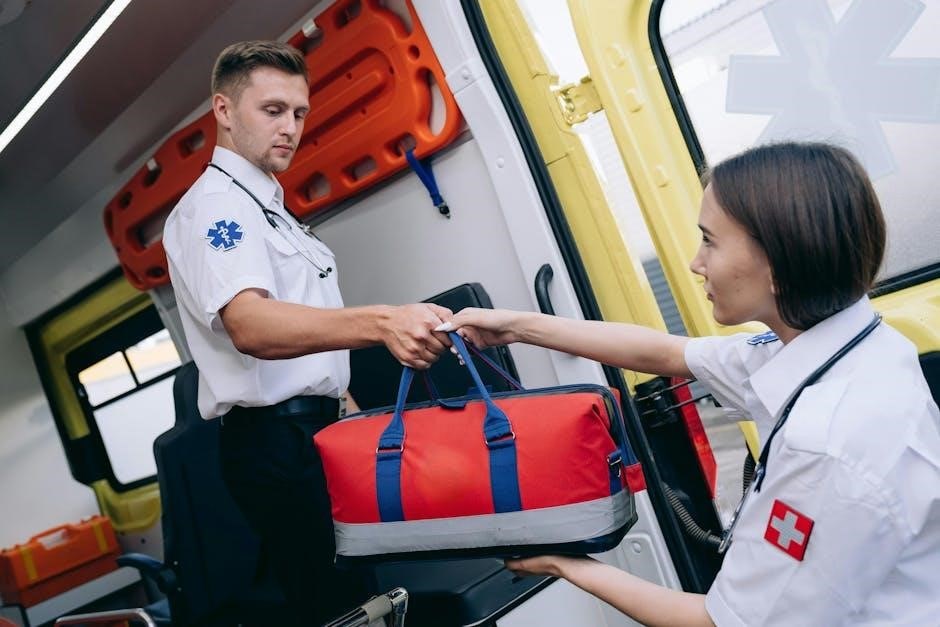burton size guide
Burton offers comprehensive size charts for men‚ women‚ and kids‚ ensuring the perfect fit for outerwear‚ apparel‚ snowboard boots‚ bindings‚ and accessories․ Their guide includes detailed measurements and an AI-powered tool to determine your size based on body measurements․ Burton boots typically fit true to size‚ eliminating the need to adjust your usual shoe size․

Choosing the Right Size
To choose the right size‚ start by measuring your chest‚ waist‚ and hips according to Burton’s guidelines․ Use their size charts for accurate fits․ Convert your US size to EU for boots‚ as Burton boots typically fit true to size․ Consider your riding style and fit preferences‚ whether slim‚ regular‚ or loose․ Use Burton’s AI tool for personalized sizing recommendations․ Ensure boot and binding compatibility by referencing their charts‚ and consider weight ranges for snowboard length․ Double-check measurements for accuracy and confidence in your selection․
2․1 Understanding Fit
Understanding fit is crucial when selecting Burton apparel and gear․ Burton offers various fits‚ including slim‚ regular‚ and loose‚ catering to different preferences and riding styles․ For example‚ slim-fit jackets and pants provide a more tailored look and feel‚ while loose-fit options offer maximum comfort and mobility․ When it comes to snowboard boots‚ fit is equally important․ Burton boots are designed to fit true to size‚ eliminating the need to size up or down․ However‚ factors like foot shape and personal comfort may influence your choice․ Some Burton boot models feature a wide or narrow footbed‚ ensuring a precise fit for various foot types․
Additionally‚ Burton bindings are designed to work seamlessly with their boots‚ offering compatibility across different sizes․ Ensuring the right fit between boots and bindings is essential for optimal performance and comfort on the snow․ Burton’s size charts provide detailed measurements for both boots and bindings‚ making it easier to find the perfect match; By understanding your fit preferences and leveraging Burton’s sizing resources‚ you can ensure a comfortable and high-performance experience on the mountain․
2․2 Using Burton Size Charts
Using Burton size charts is a straightforward process that ensures you find the perfect fit for your snowboarding gear․ Burton provides detailed size charts for jackets‚ pants‚ boots‚ and bindings‚ making it easy to determine your ideal size․ To get started‚ identify your measurements‚ such as chest‚ waist‚ and hip circumference‚ and compare them to the corresponding sizes on the chart․ This will help you select apparel that aligns with your body type and preferred fit style‚ whether slim‚ regular‚ or loose․
When using the size charts‚ pay attention to the specific measurements provided for each product category․ For example‚ Burton snowboard boots are sized using US shoe sizes‚ but the charts also include centimeter measurements to ensure accuracy․ Similarly‚ bindings are sized to match boot sizes‚ so cross-referencing these charts will help you find a compatible setup․ If your measurements fall between two sizes‚ it’s generally recommended to size up for comfort and mobility․
Additionally‚ Burton size charts often include fit descriptions‚ such as “true to size” or “runs small‚” to guide your decision․ Double-checking your measurements and referring to the charts ensures a consistent fit across all Burton products․ By leveraging these resources‚ you can confidently select gear that meets your needs and enhances your snowboarding experience․
Measuring Guidelines
Accurate measurements are crucial for the best fit․ Use a flexible tape measure‚ keeping it level and not too tight․ Stand upright with relaxed muscles for precise readings․ Consistent measuring ensures optimal fit for Burton apparel and gear‚ aligning with their size charts for comfort and performance․
3․1 How to Measure Chest‚ Waist‚ Hips
To ensure the best fit‚ accurate body measurements are essential․ Start by standing upright and relaxed‚ with your feet shoulder-width apart․ Use a flexible tape measure and keep it level for consistent results․
Chest: Measure around the fullest part of your chest‚ keeping the tape measure parallel to the floor․ The tape should be snug but not tight‚ passing under your armpits and across your nipple line․ This measurement is crucial for determining your jacket or snowboard jacket size․
Waist: Find your natural waistline‚ which is the narrowest point of your torso‚ usually just above your belly button․ Wrap the tape measure around this area‚ ensuring it’s level and not twisted․ This measurement helps determine your pant size and overall fit․
Hips: Measure around the widest part of your hips‚ approximately 7-9 inches (18-23 cm) below your waistline․ The tape should be level and pass over the hip bones․ This measurement is important for ensuring your pants or bibs fit comfortably․
For the most accurate results‚ take these measurements while wearing thin clothing or no clothing at all․ Double-check your measurements by having someone assist you‚ especially for hard-to-reach areas like the chest․ Burton’s size charts are designed to align with these measurements‚ ensuring a comfortable and functional fit for all their products․
3․2 How to Measure Foot Size

Accurate foot measurements are crucial for selecting the right Burton boots and bindings․ To ensure a proper fit‚ follow these steps to measure your foot size correctly․
Using a Brannock Device: A Brannock device is the most reliable tool for measuring foot length and width․ Place your foot flat on the device‚ ensuring your weight is evenly distributed․ The device will provide your foot length and width in inches or centimeters․ This measurement aligns with Burton’s boot size chart for optimal fit․
Using a Ruler: If a Brannock device is unavailable‚ you can measure your foot manually․ Stand barefoot on a flat surface and trace the outline of your foot on a piece of paper․ Use a ruler to measure the longest point (heel to toe) for length and the widest point for width․ Add 1/4 inch (6 mm) to account for socks and boot thickness․
Important Tips: Measure your feet at the end of the day‚ as feet tend to swell slightly․ Wear the same type of socks you plan to use with your boots for accurate sizing․ If one foot is larger‚ use the larger measurement to ensure comfort․ Burton’s sizing chart is designed to accommodate these measurements‚ ensuring a snug yet comfortable fit for all-day performance․
By following these guidelines‚ you can determine your correct foot size and match it to Burton’s boot sizing chart for the best fit and functionality․

Burton Boot Sizing
Burton boots are designed to deliver superior comfort and performance․ Their sizing system ensures a precise fit‚ catering to various foot shapes and riding styles․ With a wide range of sizes‚ Burton offers options for men‚ women‚ and youth․ Always refer to the official size chart for accurate fitting‚ ensuring optimal comfort and responsiveness․
Key Features: True-to-size fit‚ customizable liners‚ and a focus on durability․ Burton boots are crafted to meet the demands of snowboarding‚ providing support and flexibility for all skill levels․ Use the provided size chart to match your foot measurements for the best experience on the mountain․
4․1 Boot Size Chart
Burton Boot Size Chart is a comprehensive guide designed to help you find the perfect fit for your snowboarding boots․ The chart provides detailed measurements for men’s‚ women’s‚ and youth sizes‚ ensuring accuracy and comfort․ Below is a general overview of the size chart structure:

| US Size | EUR Size | UK Size | Foot Length (cm) |
|---|---|---|---|
| 6 | 36 | 5 | 23․5 |
| 7 | 37 | 6 | 24 |
| 8 | 38 | 7 | 24․5 |
| 9 | 39 | 8 | 25 |
| 10 | 40 | 9 | 25․5 |
| 11 | 41 | 10 | 26 |
| 12 | 42 | 11 | 26․5 |
Key Points: Always measure your foot length in centimeters for the most accurate fit․ Burton boots are designed to be true-to-size‚ but personal preferences for tight or loose fits may vary․ Refer to the official Burton Size Chart for the most up-to-date information‚ as sizes may vary slightly between models․ Using the chart correctly ensures optimal comfort and performance on the mountain․
By following the Burton Boot Size Chart‚ you can eliminate the hassle of returns and exchanges‚ ensuring your boots fit perfectly right out of the box․ Burton’s commitment to precision sizing makes it easier to enjoy your snowboarding experience without compromising on comfort or performance․
4․2 How Boots Fit

Understanding how Burton boots fit is crucial for maximizing comfort and performance on the mountain․ Burton boots are designed to provide a snug‚ responsive fit that supports your feet during snowboarding․ The fit is influenced by several factors‚ including the shape of your foot‚ the thickness of your socks‚ and your personal preference for tightness or roominess․
Burton boots are known for their true-to-size fit‚ meaning they align closely with standard shoe sizes․ However‚ it’s important to consider the following characteristics:
- Heel Hold: A proper fit ensures minimal heel lift during movement‚ preventing blisters and improving control․
- Toe Room: Your toes should have enough space to wiggle slightly but not feel cramped or overly loose․
- Instep Comfort: The boot should feel snug around the instep without causing pressure points․
- Flex Rating: Softer flex boots are more forgiving‚ while stiffer boots provide better response for advanced riders․
Burton boots feature customizable liners and adjustable lacing systems‚ allowing you to fine-tune the fit․ For the best experience‚ try boots on with the same type of socks you plan to wear snowboarding․ Stand in a skiing position to assess how the boots feel under pressure․

Key tips for ensuring the right fit include:
- Measure your foot length and compare it to the Burton Boot Size Chart․
- Break in new boots gradually to avoid discomfort․
- Consider the width of the boot if you have narrower or wider feet․
Burton’s commitment to precision engineering ensures that their boots deliver exceptional comfort and performance․ By focusing on how boots fit‚ you can enjoy a more enjoyable and responsive snowboarding experience․

Burton Binding Sizing
Burton binding sizing is a critical aspect of ensuring optimal performance and comfort while snowboarding․ Properly sized bindings help maintain control‚ responsiveness‚ and stability on the mountain․ Burton bindings are designed to accommodate a wide range of boot sizes and riding styles‚ making it essential to choose the right size for your setup․
Burton bindings are typically available in sizes ranging from Small (S) to Extra Large (XL)‚ with each size corresponding to specific boot lengths․ The binding size is determined by the length of your snowboard boot‚ so it’s crucial to measure your boot accurately before selecting a binding․ Burton provides a detailed size chart to help you match your boot size to the appropriate binding size․
To determine the correct binding size‚ measure the length of your boot from the tip to the heel and compare it to Burton’s binding size chart․ The chart will guide you to the ideal size based on your boot’s dimensions․ Keep in mind that binding sizes may vary slightly depending on the model‚ so always refer to the specific product’s sizing information․
In addition to boot size‚ consider your riding style and personal preference when selecting bindings․ For example‚ freestyle riders may prefer a slightly smaller binding for easier maneuverability‚ while all-mountain riders might opt for a larger size for added stability․ Burton bindings also feature adjustable components‚ allowing you to fine-tune the fit to your boots and riding style․
By choosing the right Burton binding size‚ you can ensure a secure‚ comfortable‚ and responsive connection to your snowboard‚ enhancing your overall snowboarding experience․





































